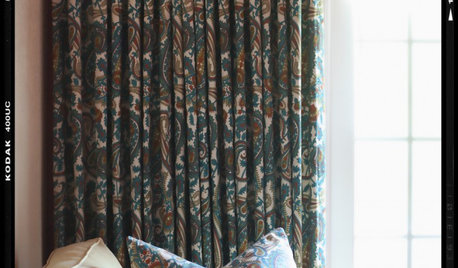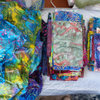Extremely frustrated - needle breaking FMQ
lola99
10 years ago
Related Stories

DECORATING GUIDESFeel Free to Break Some Decorating Rules
Ditch the dogma about color, style and matching, and watch your rooms come alive
Full Story
PETSPet-Proofing Your Home: A Room-by-Room Guide
Not all pet dangers are obvious. Keep furry friends safe and sound by handling all of these potential hazards
Full Story
GARDENING GUIDESGarden Myths to Debunk as You Dig This Fall and Rest Over Winter
Termites hate wood mulch, don’t amend soil for trees, avoid gravel in planters — and more nuggets of garden wisdom
Full Story
HOUZZ QUIZHouzz Quiz: What Color Should You Paint Your House?
Is white right? Maybe dark blue-gray? Take our quiz to find out which color is best for you and your home
Full Story
COMMUNITYCommunity Building Just About Anyone Can Do
Strengthen neighborhoods and pride of place by setting up more public spaces — even small, temporary ones can make a big difference
Full Story
MOST POPULAR10 Smart Ideas for Your Laundry Room Remodel
Make washing and drying easier and more comfortable by considering ergonomics, storage and special features
Full Story
GARDENING GUIDESGreat Garden Combo: 3 Wonderful Plants for a Deer-Resistant Screen
Protect your privacy and keep deer at bay with a planting trio that turns a problem garden area into a highlight
Full Story
DECORATING GUIDESHow to Get Your Window Treatment Right
Here's the lingo to know to get the draperies you really want
Full Story
MUDROOMSHouzz Call: We Want to See Your Hardworking Mudroom
The modern mudroom houses everything from wet boots to workstations. Proud of your space? Inspire us with your photos and tips
Full Story
ORGANIZINGSmall Steps to Organizing Success
Take care of bite-size projects, and your home's big picture will be an organized dream before you know it
Full StoryMore Discussions








lola99Original Author
jennifer_in_va
Related Professionals
Beaufort Furniture & Accessories · Evanston Furniture & Accessories · Tucson Furniture & Accessories · New Hope Furniture & Accessories · North Bellmore Furniture & Accessories · Caledonia Interior Designers & Decorators · Auburn Flooring Contractors · Chandler Flooring Contractors · Riverbank Flooring Contractors · Wausau Flooring Contractors · Alum Rock Flooring Contractors · Owasso Furniture & Accessories · Annandale Furniture & Accessories · Crofton Furniture & Accessories · Fountain Furniture & Accessoriesmsmeow
toolgranny
magothyrivergirl
meldy_nva
calliope
lola99Original Author
K8Orlando
msmeow
calliope